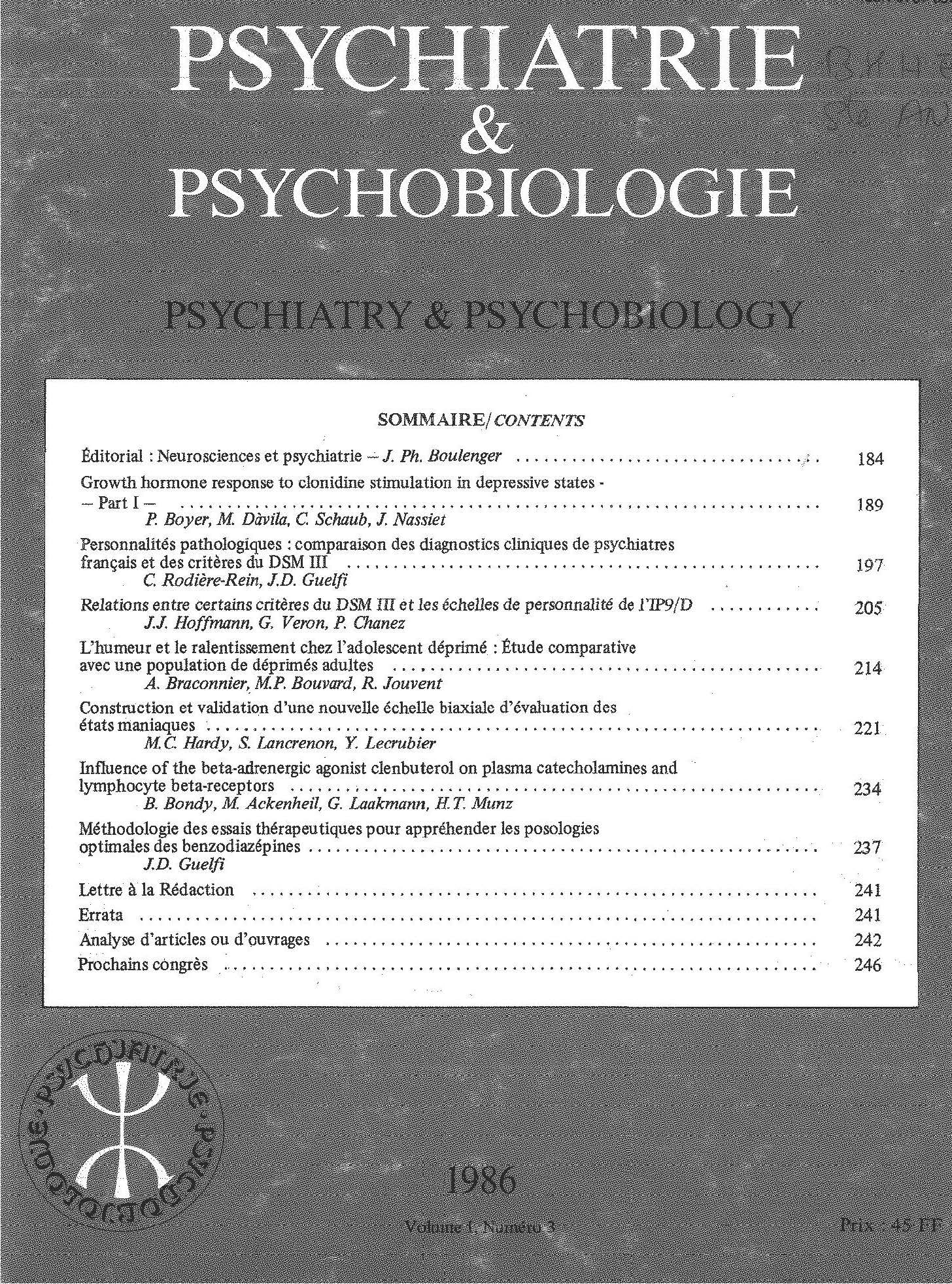Article contents
Psychopharmacological analysis of some behavioural models of depression
Published online by Cambridge University Press: 28 April 2020
Summary
Behavioural models of depressive illness must attempt to satisfy at least the four following criteria: similarity of inducing conditions, similarity of the behavioural State induced, similarity of the underlying neurobiological mechanisms and similarity of clinically effective treatments. The fourth criterion is probably the most relevant because fairly reliable information about the efficacy of treatments, particularly drugs is already available. Thus judicious testing of known drugs can serve as an important tool for analysing the behavioural changes observed in different behavioural models. The accompanying paper illustrates this point by describing pharmacological analysis of separation and social dominance phenomena in monkeys and of acute and chronic stress effects in rats.
Résumé
Les modèles animaux de dépression doivent au moins tenter de satisfaire les quatre critères suivants : la similitude des facteurs déclenchants, la similitude de l’état comportemental induit, la similitude des mécanismes neurobiologiques sous-jacents et la similitude d'efficacité thérapeutique des traitements. Le quatrième critère est probablement le plus pertinent parce que nous disposons de renseignements assez fiables sur l'efficacité des traitements, en particulier des médicaments. L’étude des effets des médicaments connus sert donc d'outil important pour l'analyse des modifications comportementales observées sur différents modèles. L'article qui suit illustre ce propos en décrivant l'analyse psychopharmacologique des phénomènes de séparation et de dominance sociale chez le singe et des effets de stress aigu et chronique chez le rat.
Keywords
- Type
- Research Article
- Information
- Copyright
- Copyright © European Psychiatric Association 1986
References
References/Bibliographie
- 1
- Cited by



Comments
No Comments have been published for this article.